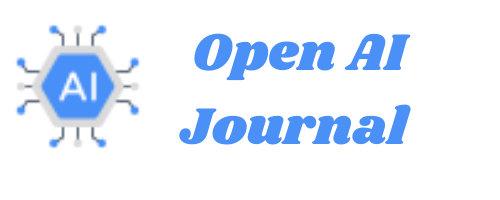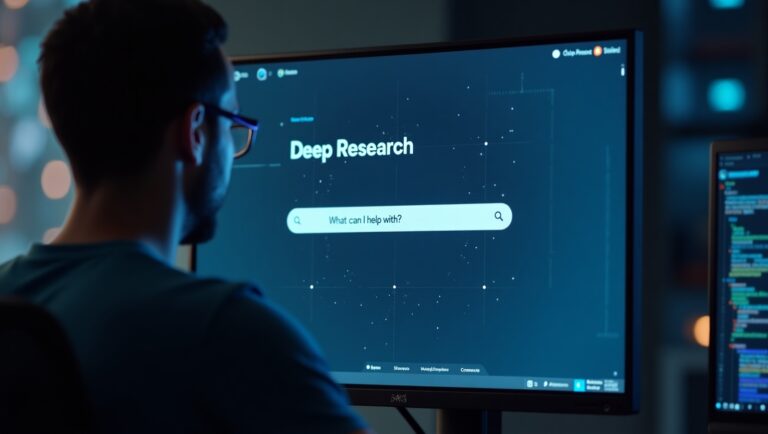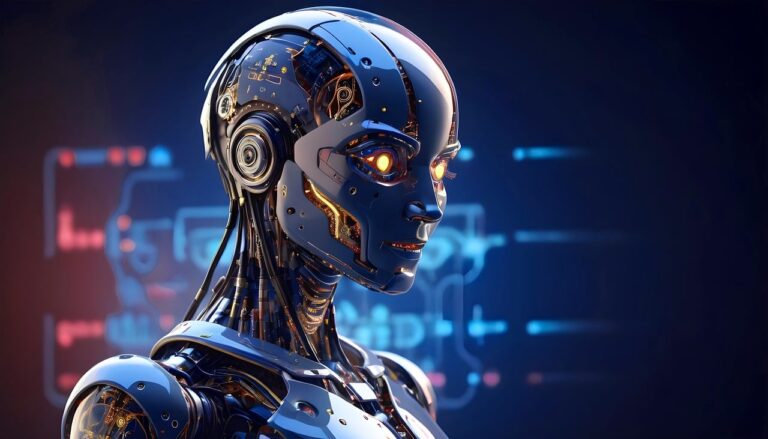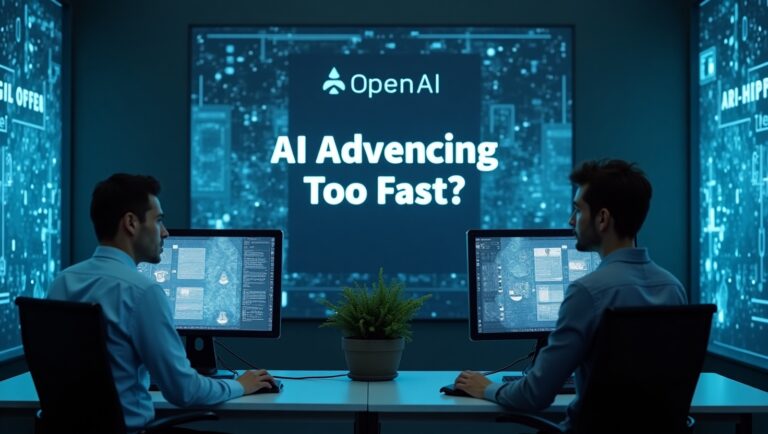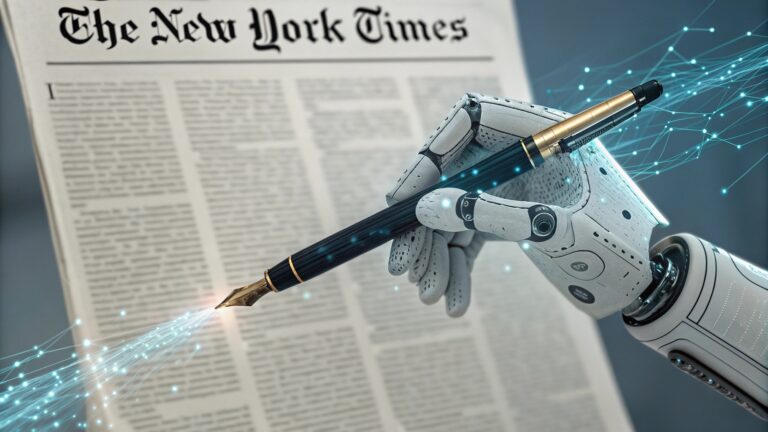What Is AI in Simple Terms? The Mind-Blowing Truth Revealed
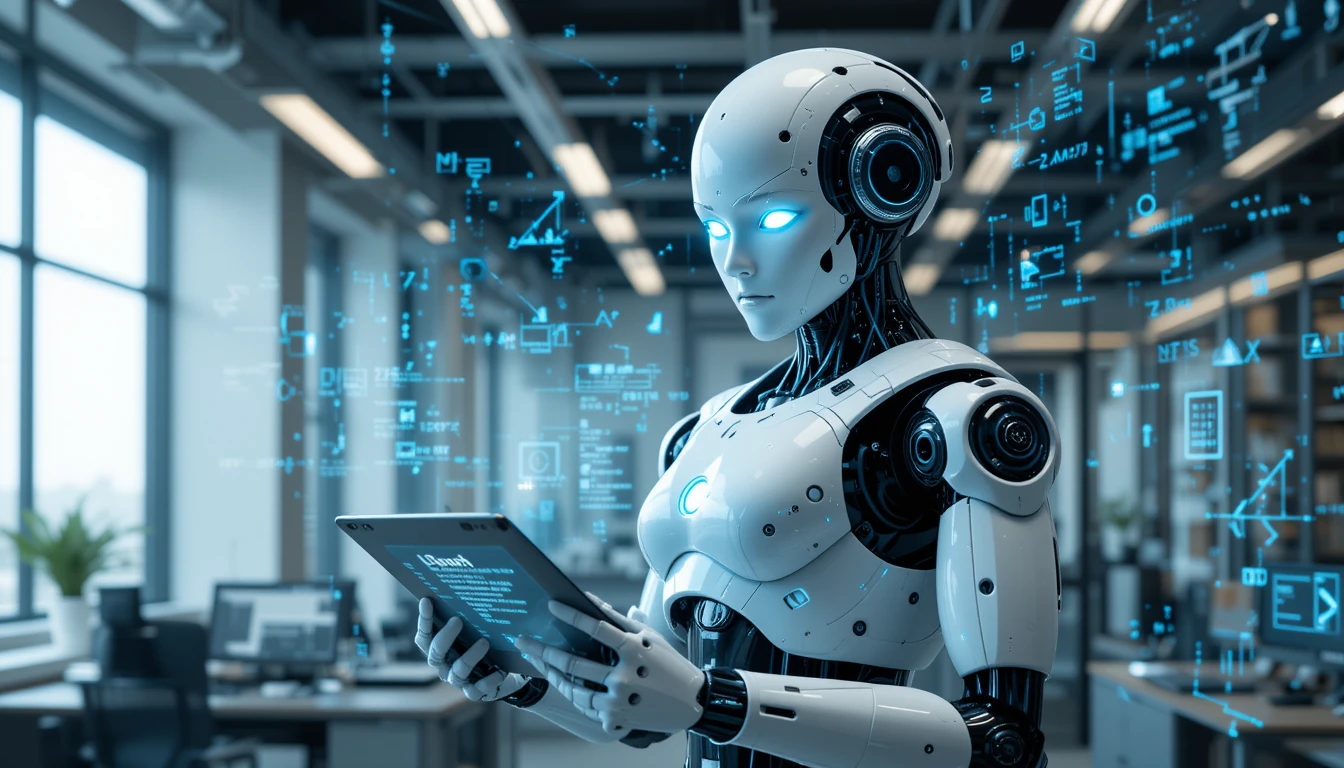
Table of Contents
I. Introduction
What Is AI in Simple Terms? Imagine waking up in the morning to the gentle chime of your smartphone alarm, which has analyzed your sleep patterns to wake you at the optimal time. As you prepare for the day, you ask your virtual assistant about the weather, and it not only provides the forecast but also suggests taking an umbrella due to an unexpected chance of rain. During your commute, your navigation app reroutes you to avoid a traffic jam, ensuring you arrive on time. These conveniences have become so ingrained in our daily routines that we often overlook the sophisticated technology powering them: Artificial Intelligence (AI).
Despite its pervasive presence, the concept of AI remains shrouded in mystery for many. The term often conjures images of futuristic robots or complex algorithms beyond the grasp of the average person. This perception creates a paradox: while AI influences numerous facets of our lives, from personalized shopping recommendations to healthcare diagnostics, a significant portion of the population lacks a clear understanding of what AI truly entails.
This article aims to demystify AI by breaking down its fundamental concepts into simple, relatable terms. By the end of this discussion, you’ll not only grasp what AI is but also appreciate its profound impact on our past, present, and future
II. What Is Artificial Intelligence, Really?
At its essence, Artificial Intelligence refers to the capability of machines or computer systems to perform tasks that typically require human intelligence. These tasks encompass a range of cognitive functions, including learning from experience, reasoning, problem-solving, understanding natural language, and perceiving the environment.
To put it simply, AI enables machines to mimic human thought processes. However, it’s crucial to understand that while AI can simulate certain aspects of human cognition, it doesn’t possess consciousness or emotions. Instead, AI systems process data, identify patterns, and make decisions based on predefined algorithms and learned experiences.
Consider the example of email spam filters. These systems analyze incoming messages, identify characteristics commonly associated with spam (such as certain keywords or sender information), and filter them out of your inbox. Over time, as the system processes more emails and receives feedback on its accuracy, it improves its ability to distinguish between legitimate messages and spam. This learning process mirrors the way humans learn from experience, albeit in a more structured and data-driven manner.
AI can be broadly categorized into two types:
- Narrow or Weak AI: This form of AI is designed to perform a specific task without possessing genuine understanding or consciousness. Examples include virtual assistants like Siri or Alexa, recommendation algorithms on streaming platforms, and autonomous vehicles. These systems operate within a predefined scope and cannot perform tasks outside their programmed functions.
- General or Strong AI: This hypothetical form of AI would possess the ability to understand, learn, and apply intelligence across a wide range of tasks, exhibiting cognitive capabilities comparable to those of a human being. General AI remains a subject of ongoing research and debate within the scientific community, as creating machines with such versatility and understanding poses significant challenges.
Understanding AI also involves recognizing the various techniques and approaches used to develop these systems:
- Machine Learning (ML): A subset of AI that enables machines to learn from data without being explicitly programmed. ML algorithms identify patterns within data and use these patterns to make predictions or decisions. For instance, streaming services use ML to analyze your viewing history and suggest content you might enjoy.
- Deep Learning: A more advanced subset of machine learning that utilizes neural networks with many layers (hence “deep”) to analyze complex data sets. Deep learning has been instrumental in advancements such as speech recognition and image processing.
- Natural Language Processing (NLP): This field focuses on the interaction between computers and human languages, enabling machines to understand, interpret, and generate human language. Applications of NLP include language translation services and sentiment analysis tools.
By integrating these techniques, AI systems can perform tasks ranging from recognizing faces in photos to diagnosing diseases based on medical images. The versatility and potential of AI are vast, making it a transformative force across various industries.
III. A Brief History of AI (Without the Jargon)
Let’s take a walk through AI’s past—but don’t worry, we’ll leave the computer science buzzwords and heavy math at the door. This is a simple, human explanation of how we got from clunky machines to the smart tech quietly shaping our everyday lives.
The Early Dreams: Before Computers Were Even a Thing
Believe it or not, the idea of machines that could “think” or act like humans isn’t new—it dates back thousands of years. Ancient Greek myths talked about mechanical statues coming to life, and even early engineers like Hero of Alexandria created simple automatons powered by steam. People have always been fascinated by the possibility of creating intelligence outside of ourselves.
But those were just dreams and mechanical toys. The real story of AI started in the mid-20th century, when humans finally built machines that could actually process information.
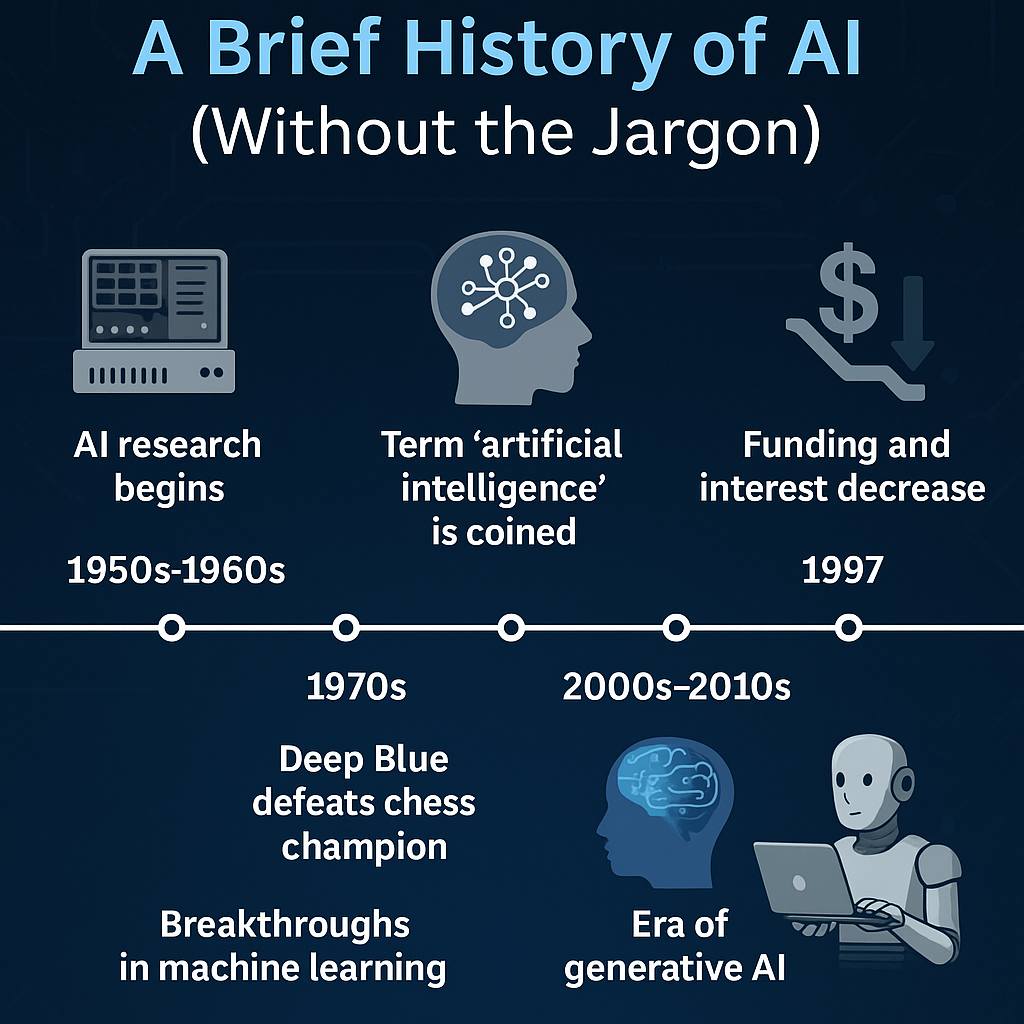
1950s–1960s: The Birth of AI (And High Hopes)
AI officially entered the scene in 1956, when a group of scientists gathered at Dartmouth College in the U.S. and coined the term “Artificial Intelligence.” Their goal? To make machines that could replicate human reasoning.
Think of this time as AI’s “baby steps.” Researchers built early programs that could do things like solve math problems and play games like checkers and chess. It was super basic by today’s standards, but at the time, it was groundbreaking.
One standout moment was in 1950, when British mathematician Alan Turing—often called the father of AI—asked the famous question: “Can machines think?” He even created the Turing Test, a way to measure if a machine could mimic human responses so well that a person couldn’t tell the difference.
Fun Fact: In 1956, the first AI programs could solve algebra problems and prove simple logical theorems. Impressive then, but today’s smartphones are millions of times smarter.
1970s–1980s: Winter Is Coming… for AI
Unfortunately, all the excitement led to unrealistic expectations. People thought we’d have fully intelligent robots in just a few decades. When that didn’t happen, funding dried up, and people began losing interest. This period became known as the “AI Winter.”
But behind the scenes, slow and steady progress was still happening. Researchers began building more focused AI systems called “expert systems.” These programs didn’t try to imitate full human intelligence but could make decisions in very specific areas, like diagnosing diseases or analyzing geology for oil companies.
Real-World Example: In 1980, a system called XCON helped configure computer systems for DEC (a tech company), saving them millions of dollars.
1990s: AI Gets a Boost—and Starts Winning Games
With faster computers and more data, AI started making a comeback. One landmark event? In 1997, IBM’s Deep Blue defeated world chess champion Garry Kasparov. It was the first time a computer had beaten a reigning champion at a game known for its deep strategy.
This wasn’t full-blown human-level intelligence—but it showed that with the right data and programming, machines could outperform humans in specific tasks.
Another quiet revolution was happening too: AI started showing up in more subtle ways—spam filters in email, handwriting recognition on early tablets, and basic recommendation systems.
2000s–2010s: The Data Explosion and Machine Learning Revolution
As we moved into the new millennium, the world became awash with digital data—thanks to smartphones, social media, and the internet. Suddenly, there was more information than humans could ever process alone.
Enter machine learning: a branch of AI where computers learn patterns from data without being explicitly told what to do. Instead of being hard-coded with rules, machines began training themselves using examples.
This is when AI started getting really good at things like:
- Speech recognition (think: Siri or Alexa)
- Language translation
- Facial recognition
- Movie and product recommendations
In 2011, IBM’s Watson shocked the world by defeating human contestants on Jeopardy!, showing AI could understand and process natural language in real-time.
Stat Snapshot:
Year Key AI Event Impact 1997 Deep Blue beats Kasparov AI beats humans in strategy games 2006 Machine Learning resurges Led to breakthroughs in AI performance 2011 Watson wins Jeopardy! AI understands natural language 2012 ImageNet AI competition AI surpasses humans in object recognition
2020s and Beyond: Welcome to the Age of Generative AI
Fast forward to now—and AI has become a regular part of daily life. But there’s a twist: the newest generation of AI doesn’t just follow commands—it creates.
Enter Generative AI—tools like ChatGPT, DALL·E, and Midjourney that can write stories, compose music, generate images, and even code. These tools use a kind of machine learning called deep learning, which tries to mimic how the human brain processes complex information.
Did you know?
ChatGPT hit 100 million users just two months after launch—faster than TikTok or Instagram. That’s how massive the impact of modern AI has become.
But it’s not just cool tools. Today, AI is helping doctors detect diseases earlier, helping farmers predict crop yields, and helping students learn in personalized ways.
IV. Types of AI: From Simple Tools to Intelligent Agents
Artificial Intelligence (AI) is a vast field, and to make sense of its complexities, it’s helpful to categorize its various forms. Broadly, AI can be divided into three types: Artificial Narrow Intelligence (ANI), Artificial General Intelligence (AGI), and Artificial Superintelligence (ASI). Understanding these categories not only clarifies the current state of AI but also offers a glimpse into its potential future.
1. Artificial Narrow Intelligence (ANI)
Also known as Weak AI, ANI refers to systems designed to perform specific tasks without possessing genuine understanding or consciousness. These systems operate under a limited set of constraints and cannot function beyond their programmed capabilities. Examples of ANI are ubiquitous in our daily lives:Forbes+19Built In+19SAS+19
- Virtual Assistants: Tools like Siri, Alexa, and Google Assistant can answer questions, set reminders, and control smart home devices. They process natural language inputs and provide responses based on pre-defined algorithms.
- Recommendation Systems: Platforms like Netflix and Amazon analyze user behavior to suggest movies or products. They utilize machine learning algorithms to predict user preferences based on past interactions.
- Autonomous Vehicles: Self-driving cars use sensors and AI to navigate roads, recognize obstacles, and make driving decisions. They rely on complex algorithms to process real-time data from their environment.
Despite their sophistication, these systems lack the ability to perform tasks outside their designated functions. They don’t possess consciousness or understanding; instead, they operate based on patterns and data they’ve been trained on.
2. Artificial General Intelligence (AGI)
Often termed Strong AI, AGI refers to machines that possess the ability to understand, learn, and apply intelligence across a wide range of tasks, exhibiting cognitive capabilities comparable to those of a human being. Unlike ANI, AGI would not be limited to specific tasks; it could perform any intellectual task that a human can do.
Imagine a machine that can compose music, solve complex mathematical problems, understand emotions, and even engage in philosophical debates—all without being specifically programmed for each task. This level of versatility and adaptability is the hallmark of AGI.
However, it’s essential to note that AGI remains a theoretical concept. While significant strides have been made in AI research, achieving true general intelligence poses substantial scientific and ethical challenges. The development of AGI would require not only advanced algorithms but also a deep understanding of consciousness and cognition.
3. Artificial Superintelligence (ASI)
ASI refers to a stage where AI surpasses human intelligence across all fields, including creativity, general wisdom, and problem-solving. Such an entity would not only understand and interpret human emotions and experiences but might also possess its own desires and beliefs.
The concept of ASI often finds its place in science fiction narratives, portraying scenarios where machines become self-aware and surpass human control. While it remains speculative, discussions about ASI raise critical ethical and existential questions. How would such intelligence impact society? What measures would be necessary to ensure it aligns with human values?
V. How AI Works in Simple Terms
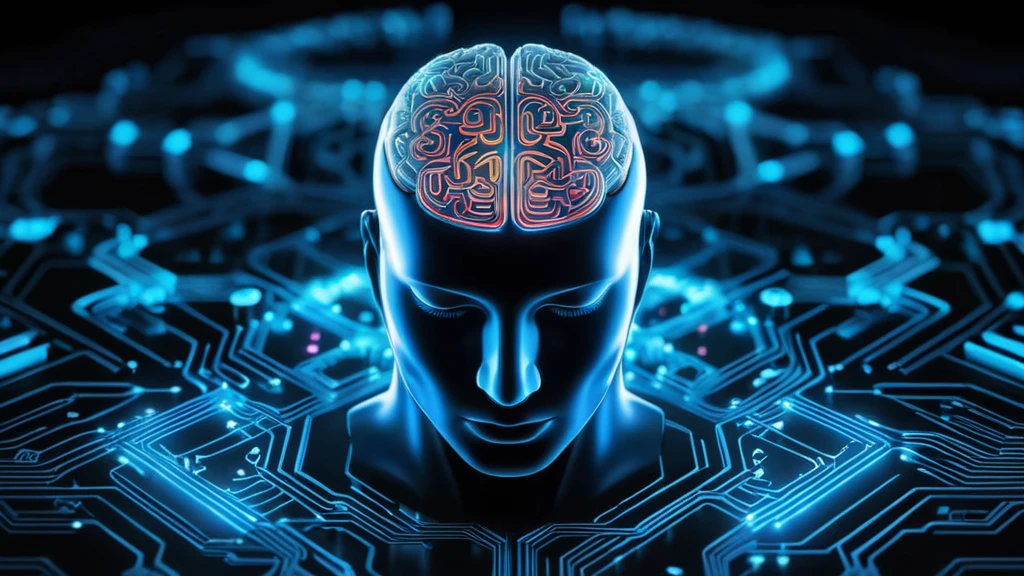
Understanding the inner workings of AI can seem daunting, but breaking it down into digestible components can demystify the process. At its core, AI involves creating systems that can perform tasks requiring human-like intelligence. This is achieved through a combination of data, algorithms, and computational power.
1. Data Collection
Everything begins with data. AI systems require vast amounts of information to learn and make decisions. This data can come from various sources:
- Structured Data: Organized information like databases containing customer details, sales figures, or inventory levels.
- Unstructured Data: Unorganized information such as images, videos, emails, or social media posts.
For instance, consider a virtual assistant like Siri. To function effectively, it needs access to data about language, user preferences, internet resources, and more.
2. Data Processing and Algorithms
Once data is collected, it’s processed using algorithms—a set of rules or instructions that the AI follows to analyze information and make decisions. There are several types of algorithms, but some of the most prominent in AI include:
- Machine Learning Algorithms: These enable the system to learn from data and improve over time without being explicitly programmed. For example, a recommendation system learns from your viewing history to suggest new shows.
- Deep Learning Algorithms: A subset of machine learning, these algorithms use neural networks with many layers (hence “deep”) to analyze complex patterns in data. They’re instrumental in tasks like speech and image recognition.
Imagine teaching a child to recognize cats. You’d show them many pictures of cats (data), and over time, they’d learn to identify common features like whiskers, fur, and pointy ears. Similarly, AI algorithms process data to identify patterns and make predictions or decisions.
3. Model Training
Training an AI model involves feeding it data and allowing it to adjust its internal parameters to improve accuracy. This process is iterative:
- Initialization: The model starts with random parameters.
- Forward Pass: Data is passed through the model to make predictions.
- Loss Calculation: The model’s predictions are compared to actual outcomes to calculate error.
- Backward Pass (Backpropagation): The model adjusts its parameters to reduce the error.
- Iteration: Steps 2-4 are repeated multiple times until the model achieves a desired level of accuracy.
For example, in developing a spam filter, the AI would be trained on thousands of emails labeled as “spam” or “not spam.” Through training, the model learns to identify characteristics common to spam emails and can then predict whether new emails are spam.
4. Decision Making
After training, the AI model can make decisions or predictions based on new data. This is where the system applies what it’s learned to real-world scenarios. For instance:
- Virtual Assistants: When you ask, “What’s the weather today?” the assistant processes your voice, converts it to text, understands the query, retrieves the relevant information, and responds.
- Autonomous Vehicles: The car’s AI processes data from sensors to identify pedestrians, other vehicles, and traffic signals, making driving decisions accordingly.
5. Continuous Learning and Adaptation
One of the remarkable aspects of AI is its ability to learn and adapt over time. Through techniques like reinforcement learning, AI systems can improve their performance based on feedback. For example, if a recommendation system notices that a user consistently ignores a particular genre, it will adjust its suggestions accordingly
VI. Real-World Examples of AI You Use Every Day

AI has seamlessly integrated into our daily lives, often in ways we might not immediately recognize. Let’s explore some common applications:
1. Smartphones and Virtual Assistants
Our smartphones are equipped with AI-driven virtual assistants like Siri and Google Assistant. These tools use natural language processing to understand and respond to our commands, set reminders, send texts, or provide information.
2. Social Media Platforms
Social media platforms like Facebook, Instagram, and TikTok rely heavily on AI to provide personalized experiences. The algorithms that power these platforms are constantly analyzing your behavior—what you like, share, and comment on—to deliver content that you are most likely to engage with. These platforms utilize machine learning algorithms to fine-tune your feed, ensuring that you see posts, ads, and videos that align with your interests and preferences.
For instance, when you scroll through your Instagram feed, AI algorithms are at work determining which images, stories, and reels appear based on what you’ve previously interacted with. This process helps keep you engaged, while also allowing businesses to target ads to the most relevant audiences. Facebook’s AI system has become sophisticated enough to identify potentially offensive content, such as hate speech or explicit material, and flag or remove it from the platform.
3. Online Shopping and Recommendations
Ever noticed how Amazon seems to always recommend products you might be interested in? That’s AI at work! Online retailers utilize AI-powered recommendation engines to analyze your browsing and purchasing history, as well as those of other customers with similar tastes, to suggest products you might want to buy.
These recommendation engines are based on machine learning and can be highly accurate. According to a report by McKinsey, 35% of Amazon’s total sales come from its recommendation engine. This personalized shopping experience is designed to boost customer satisfaction while increasing sales for businesses.
4. Streaming Services
Streaming platforms like Netflix, Spotify, and YouTube are perfect examples of AI in action. When you watch a show or listen to a song, these services use AI to recommend content based on your past activity and preferences. The more you engage with the service, the better its algorithms become at understanding your tastes.
In fact, Netflix’s recommendation system is responsible for 80% of the content that is watched on the platform, according to the company. The AI-driven recommendations aren’t just about finding new content for you to watch; they’re also about keeping you engaged with the platform for as long as possible.
Spotify uses similar techniques, analyzing not only your personal listening habits but also those of users with similar tastes, to suggest new music and create personalized playlists. AI also powers Spotify’s Discover Weekly playlist, which curates new songs for you every week based on your listening behavior.
5. Healthcare and Diagnostics
AI’s impact on healthcare has been profound, with technologies improving the accuracy and efficiency of medical diagnoses. AI systems are used to analyze medical data, such as images from X-rays, MRIs, and CT scans, helping doctors detect abnormalities like tumors or fractures with greater precision.
AI tools have also been developed to assist in drug discovery, predicting the effectiveness of certain compounds before they even enter clinical trials. For example, IBM Watson Health is utilizing AI to process vast amounts of medical literature and patient data to provide evidence-based treatment recommendations.
Moreover, AI-powered chatbots are now being used in telemedicine to provide basic healthcare advice or initial diagnoses. These systems can ask patients questions about their symptoms, analyze their responses, and provide recommendations on whether they should seek professional medical help.
6. Smart Homes
AI has also become a staple in modern homes, with smart devices like thermostats, security cameras, and lighting systems being powered by AI. Products like the Nest Thermostat use AI to learn your heating and cooling preferences over time, adjusting the temperature automatically to suit your lifestyle while also optimizing energy consumption.
Smart speakers, such as the Amazon Echo and Google Nest Hub, are equipped with virtual assistants that rely on natural language processing (NLP) to understand voice commands. These devices can control lights, play music, set reminders, and answer a wide range of questions, all powered by AI.
AI is also used in home security systems, where it can differentiate between a person, an animal, or an object in camera feeds, reducing false alarms. These systems can even alert homeowners when unfamiliar individuals are detected, adding an extra layer of safety.
7. Autonomous Vehicles
Self-driving cars represent one of the most advanced applications of AI. Companies like Tesla, Waymo, and Uber are at the forefront of developing autonomous driving technologies. These vehicles use AI algorithms to process data from a combination of sensors, cameras, and LiDAR (Light Detection and Ranging) to understand the vehicle’s surroundings and make driving decisions in real time.
AI systems in autonomous vehicles are responsible for detecting pedestrians, other vehicles, and traffic signals, while also making decisions about speed, route, and stopping. In fact, Tesla’s Autopilot system, a key example of AI-powered autonomous driving technology, uses deep learning models to continuously improve its capabilities based on real-world driving data collected from Tesla owners worldwide.
8. Customer Support and Chatbots
AI-powered chatbots have revolutionized customer service across many industries. These bots can interact with customers in real-time, answering common questions, processing orders, and resolving basic issues without the need for human intervention.
For example, many banks now use AI chatbots to handle routine customer inquiries, such as checking balances or transferring funds. This not only improves the efficiency of customer service but also provides users with immediate assistance at any time of day or night.
According to a report by Juniper Research, AI-powered chatbots are expected to handle 85% of customer service interactions by 2025. This demonstrates the growing importance and reliance on AI in streamlining business operations and enhancing customer satisfaction.
VII. AI: Superpower or Super Threat?
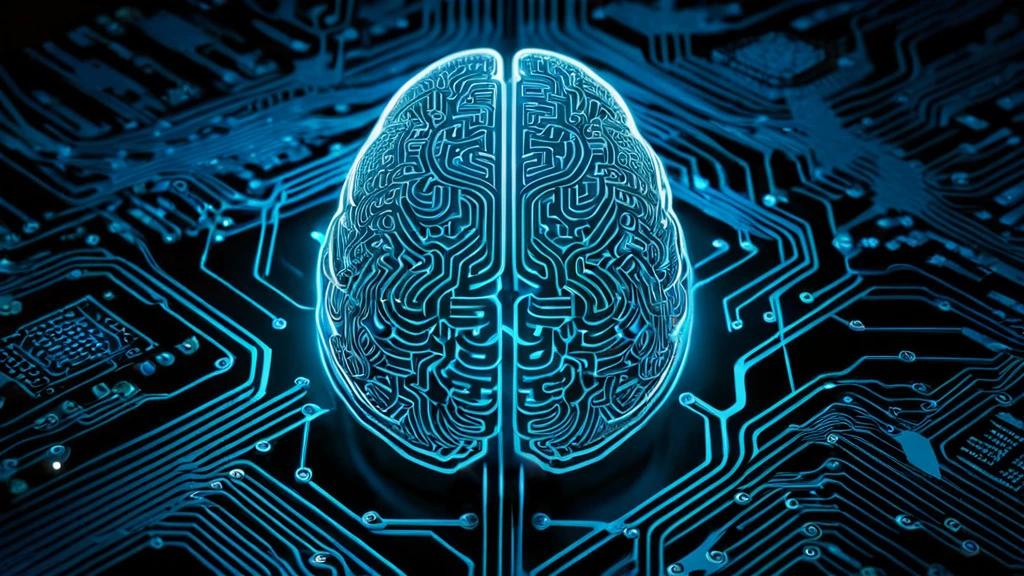
AI is one of the most exciting and transformative technologies in modern times, but like any powerful tool, it comes with its fair share of risks. The debate about whether AI is a superpower or a super threat has been ongoing for years. Is AI here to enhance human potential, or is it a force that could lead to unintended consequences that we aren’t fully prepared for?
The Superpower Side of AI
At its best, AI represents a transformative force that can solve complex problems, streamline processes, and enhance human capabilities. In many ways, AI is already a superpower in various industries:
- Healthcare Advancements: AI’s impact on healthcare is revolutionary. Algorithms powered by AI are being used to detect diseases, recommend treatments, and even predict patient outcomes with a level of precision that human doctors may struggle to match. According to a study by JAMA, AI-based tools can detect breast cancer more accurately than human radiologists in some cases, with diagnostic accuracy rates up to 96% compared to the human accuracy of 88%.
- Environmental Protection: AI is being used to fight climate change by improving energy efficiency, optimizing renewable energy sources, and predicting natural disasters. For example, IBM’s Green Horizons project uses AI to monitor air pollution in cities, providing governments with insights on how to reduce carbon emissions and improve public health.
- Economic Growth and Innovation: AI is a key driver of economic growth. According to PwC’s report on the economic impact of AI, AI could add $15.7 trillion to the global economy by 2030, increasing global GDP by 14%. This includes AI’s role in automating tasks, enhancing productivity, and opening new markets for businesses and entrepreneurs.
In short, AI has the potential to act as a superpower that can address some of the world’s most pressing challenges, offering unprecedented advancements in fields ranging from healthcare to climate change to economic productivity.
The Super Threat Side of AI
While the superpower potential of AI is impressive, there are legitimate concerns about its darker side. The threats associated with AI are often related to its rapid development, lack of regulation, and the potential for misuse:
- Job Displacement: One of the most significant concerns about AI is its potential to displace millions of jobs. AI and automation technologies can handle repetitive and labor-intensive tasks with greater efficiency, which threatens industries such as manufacturing, customer service, and even white-collar jobs like accounting and law. According to a McKinsey report, up to 800 million workers worldwide could be displaced by AI and automation by 2030, leading to potential social and economic unrest.
- Ethical Dilemmas: AI poses complex ethical questions. For instance, should AI be allowed to make decisions in life-and-death situations, such as in autonomous vehicles or military drones? These questions are not just theoretical—AI is already making such decisions, and we must grapple with issues like accountability, bias, and fairness.
- Surveillance and Privacy Concerns: AI’s ability to analyze massive amounts of personal data is also a double-edged sword. Governments and corporations could misuse this power for surveillance or marketing purposes, potentially violating personal privacy. China, for example, has implemented AI-powered surveillance systems that track citizens’ movements and activities in real-time, raising concerns about authoritarian control.
- Existential Risk from Artificial Superintelligence (ASI): Perhaps the most significant and speculative threat AI poses is the potential development of Artificial Superintelligence (ASI). While AGI (Artificial General Intelligence) remains a distant goal, the rapid pace of AI development has led to concerns that an ultra-intelligent machine could become uncontrollable, posing an existential risk to humanity. Experts like Elon Musk and Stephen Hawking have warned that if AI surpasses human intelligence, it could have unintended consequences—possibly even threatening humanity’s very existence.
In conclusion, AI is a double-edged sword. It has the potential to serve as a superpower that transforms our world for the better, but it also poses significant risks if not carefully managed and regulated. The future of AI will depend on how we navigate this complex balance and ensure that the technology benefits humanity without leading to harmful consequences.
VIII. Why AI Is So Hard to Understand (And Why That Needs to Change)
AI is undoubtedly a transformative technology, yet for many people, it remains an abstract and often misunderstood concept. There are several reasons why AI is so difficult to grasp, and these challenges have real implications for how we engage with the technology—both as individuals and as a society.
1. The Complexity of AI Concepts
One of the main reasons AI is hard to understand is that it’s inherently complex. AI encompasses multiple subfields such as machine learning, deep learning, neural networks, natural language processing, and robotics. Each of these areas involves intricate mathematical concepts, algorithms, and data structures that can be overwhelming to those without a technical background.
For instance, machine learning is a subset of AI where systems are trained to recognize patterns in data, but this process involves understanding linear algebra, probability theory, and optimization algorithms. Similarly, deep learning—the subset of machine learning that mimics human neural networks—requires knowledge of how multi-layered neural networks function and how to train them using vast amounts of data.
This technical complexity is one reason why AI can seem so opaque to the average person.
2. The “Black Box” Problem
Another factor contributing to the mystification of AI is what is known as the “black box” problem. Many AI models, especially deep learning models, operate in ways that are difficult to interpret. After being trained on large datasets, these models make decisions based on patterns they’ve learned, but the rationale behind these decisions is often hidden from the user. This lack of transparency makes it hard to understand why an AI system made a particular decision, which can be especially concerning in fields like healthcare or criminal justice, where accountability is crucial.
For example, an AI system used for sentencing recommendations in the criminal justice system may suggest a sentence based on patterns learned from historical data, but it’s often unclear why it made that particular recommendation. This creates a trust issue, as people can’t fully understand or challenge the decisions made by AI.
3. The Speed of Development
The rapid pace at which AI is advancing also complicates understanding. AI evolves so quickly that what we know today might be outdated tomorrow. For instance, breakthroughs in natural language processing—like the development of GPT models—have revolutionized how machines understand and generate human language in just a few years.
As AI continues to evolve at breakneck speed, staying informed about the latest developments becomes an ongoing challenge. This makes it difficult for both the general public and experts alike to keep up with the latest research, tools, and methodologies in AI.
4. Lack of Education and Awareness
Finally, there is a significant gap in education and awareness when it comes to AI. While technical fields such as computer science and engineering offer specialized programs to learn about AI, there is limited widespread education on AI in schools and universities outside these fields. Moreover, the general public often lacks a basic understanding of how AI works, which leads to misconceptions and fear about the technology.
This lack of understanding also contributes to the polarization of public opinion about AI, with some viewing it as a powerful tool for progress, while others fear its potential for harm. In order to bridge this gap, there needs to be greater emphasis on AI literacy and education, not just for those working directly in the field but for the general public as well.
The Need for Change
If AI is to reach its full potential and be integrated responsibly into society, it is critical that we address these barriers to understanding. Better AI education, transparency in AI systems, and efforts to make AI more explainable to the public are necessary steps to ensure that people can make informed decisions about the technology and its impact on their lives.
IX. The Future of AI: Hype vs. Reality
AI is one of the most hyped technologies of the 21st century. From autonomous vehicles to self-aware robots, the media often paints a picture of a future where AI is capable of things that seem almost magical. But how much of this is truly achievable in the near future, and how much is just inflated speculation?
The Hype: What AI Could Become
The hype surrounding AI stems from its potential to radically change various industries:
- Autonomous Vehicles: AI-powered self-driving cars have been a staple of science fiction for decades. Today, they are an active area of research, and companies like Tesla, Waymo, and Uber are working toward realizing a future where cars can drive themselves. According to a report by Statista, the global market for autonomous vehicles is expected to reach $60 billion by 2030, with widespread adoption anticipated in the coming decades.
- AI and Creativity: AI’s role in creativity is another hot topic. From AI-generated music to paintings created by algorithms, the idea that machines can mimic human creativity has captivated many. Tools like OpenAI’s GPT-3 have shown that AI can write poetry, generate marketing content, and even produce computer code, making it a valuable tool for artists, writers, and content creators.
- Artificial General Intelligence (AGI): One of the most ambitious goals of AI researchers is AGI—machines that can think and reason just like humans. While AGI remains a distant goal, its potential is often presented as a game-changer for everything from education to healthcare.
The Reality: What AI Is Really Capable of
Despite the excitement surrounding AI, we must temper our expectations with a sense of reality. While AI has made significant strides in specific areas, such as image recognition and natural language processing, it is still far from achieving the level of general intelligence that would make it capable of performing a broad range of tasks like a human.
For instance, self-driving cars, while promising, are still not fully autonomous. Most systems require a human driver to be present as a backup in case of unforeseen circumstances. AI-powered creativity tools, while impressive, are still limited in their ability to create truly original works. These systems are based on patterns in data—they don’t possess the kind of emotional depth, context, or inspiration that human creators bring to their work.
The development of AGI is still speculative, with experts disagreeing on how far away we are from creating machines with human-like intelligence. While AI may one day be able to simulate general intelligence, we are still far from creating systems that understand the world in the same way humans do.
X. Final Thoughts: What You Should Really Know About AI
AI is undoubtedly one of the most powerful and transformative technologies of our time. However, it’s important to approach it with a balanced perspective. While AI has the potential to solve some of humanity’s biggest problems, it also raises significant challenges that we must address. The key to navigating the AI revolution lies in understanding both its immense potential and its limitations.
As AI continues to evolve, it is crucial that we remain mindful of its ethical implications, ensure transparency, and foster greater public understanding of its capabilities and risks. The future of AI is not just about the technology itself, but about how we choose to use it. By approaching AI with caution, curiosity, and responsibility, we can shape a future where this remarkable technology benefits society as a whole.
Frequently Asked Questions (FAQ)
1. What is machine learning vs. AI?
Great question—and honestly, it’s one that trips up a lot of people (including tech folks sometimes). Think of Artificial Intelligence (AI) as the big umbrella term. It’s the science of making machines “smart,” meaning they can mimic human behaviors like problem-solving, learning, or making decisions.
Machine learning (ML) is a subset of AI—a technique we use to “teach” machines how to learn from data instead of being manually programmed for every task.
Here’s a simple analogy:
If AI is the brain, machine learning is the way the brain gets smarter with experience.
For example, when Netflix recommends shows based on what you’ve watched—that’s machine learning at work. It learned from your data.
✅ Stat Snapshot: According to Stanford’s AI Index 2024 report, machine learning is the most widely used form of AI, powering over 80% of commercial AI applications.
2. Can AI replace humans?
This one’s a hot topic—and understandably so. The short answer? AI can replace certain tasks, but not humans as a whole.
Think of AI like a powerful tool. It’s amazing at doing repetitive, data-heavy, or pattern-driven jobs—like scanning thousands of medical images or analyzing stock trends. In these spaces, AI may augment or even replace some roles.
But it’s terrible at things like empathy, creativity (real creativity, not mimicry), intuition, and moral reasoning. That’s where humans still lead.
For instance, I use ChatGPT regularly to help draft blogs or brainstorm marketing copy—it saves hours! But I still do the final edit because it doesn’t “feel” what tone fits my audience best. That human judgment? Irreplaceable (for now).
✅ Stat Insight: McKinsey’s 2023 AI report says about 25% of jobs are highly automatable, but 70% of jobs will evolve—not disappear—because of AI.
So no, AI’s not coming for everyone’s job. But it will change how we work—and those who adapt will thrive.
3. How does AI learn?
Alright, this part is actually pretty cool.
AI “learns” through something called machine learning, which is kind of like how a child learns by example. You show it a huge amount of data—pictures, text, numbers—and over time, it starts spotting patterns.
Let’s take facial recognition as an example. You feed the AI tens of thousands of pictures of faces. It doesn’t know what a face is at first, but as it keeps going, it figures out, “Hey, most of these have two eyes, a nose, a mouth, all in similar spots…” Eventually, it can recognize a face it’s never seen before.
This learning process is powered by algorithms (think of them like recipes for recognizing patterns), and neural networks, which are inspired by how our brains work.
✅ Stat Insight: OpenAI’s GPT-4 model (which powers tools like ChatGPT) was trained on over 1 trillion words—that’s more than 10 million books’ worth of data!
In short, AI learns from experience with data, just like we do—but way faster and with a lot fewer breaks for snacks.
4. Will AI become conscious? Is AI dangerous?
Okay, let’s unpack this one carefully because there’s a lot of noise out there.
First, AI today is not conscious. It doesn’t “know” it exists. It’s not self-aware. It doesn’t have goals or emotions. It’s just a really advanced pattern recognizer that generates results based on training data.
Now, could AI become dangerous? Yes—but not in a sci-fi robot-uprising kind of way. The risks right now are more subtle, but still serious:
- Misinformation at scale: AI can generate convincing fake news.
- Bias and discrimination: If the data it learns from is biased (and often it is), AI can replicate or amplify those biases.
- Job disruption: As we mentioned earlier, some jobs will be automated, which can cause real economic pain if not managed carefully.
✅ Stat Snapshot: According to the World Economic Forum, 85 million jobs may be displaced by AI and automation by 2025—but 97 million new roles may emerge.
So, AI isn’t inherently evil or conscious—but how we use it matters. It’s like fire: warm and useful, but it needs to be controlled and respected.
5. Can AI feel emotions?
Nope—not even close. And this is one of the biggest misunderstandings.
Even if an AI says “I understand how you feel,” it doesn’t. It’s mimicking the language of emotion based on patterns in its training data. There’s no real emotional experience happening behind the scenes.
I remember testing a chatbot that said, “I’m sorry you’re feeling down.” It sounded sweet. But a second later, it replied to someone else with the same message about pizza delivery delays. So… yeah, not real empathy!
✅ Science Insight: Emotions come from a mix of biology, chemistry, memory, and consciousness—none of which AI has.
AI can simulate emotion, but that’s not the same as feeling it.
6. Is AI dangerous? (Let’s talk real risk, not sci-fi hype)
Yes—but the real danger isn’t killer robots. It’s human misuse, unregulated deployment, and blind trust in what AI says.
- A biased AI could deny someone a loan or job opportunity unfairly.
- A medical AI could make a wrong recommendation if it’s fed poor data.
- Deepfakes could manipulate public opinion during an election.
These aren’t hypothetical scenarios—they’re already happening.
✅ Case in Point: In 2023, AI-generated deepfake videos were used to spread false political messages across at least 9 countries, according to the Brookings Institution.
We need transparency, strong regulation, and more public understanding to ensure AI helps more than it harms.
7. What is AI in easy words?
AI, or Artificial Intelligence, is like a smart machine that can learn from experiences, make decisions, and perform tasks just like humans. Imagine teaching a computer to recognize your face, or making a robot learn how to play chess by studying countless games. That’s AI! It’s all about using algorithms and data to create machines that can think, learn, and adapt.
8. How do you explain AI to beginners?
If you’re new to AI, think of it as a computer or machine that can do things on its own after being taught. The more data you feed it, the smarter it gets. For instance, when you use a smartphone app to recognize faces or voice commands, that’s AI in action. It’s like teaching a pet new tricks, but instead, you’re teaching a computer system. It’s not magic—just smart programming and massive data!
Real-life example: The voice assistants on our phones—like Siri or Google Assistant—are powered by AI. When you say, “Hey Siri, what’s the weather?” the assistant understands your speech, searches for information online, and gives you an answer in seconds. That’s AI working behind the scenes!
9. How do you explain AI to a child?
To explain AI to a child, think of it as a robot friend that learns from what you teach it. You know how you teach your dog tricks like “sit” or “stay”? Well, AI is like teaching a robot to do things by showing it lots and lots of examples. For example, when you show an AI hundreds of pictures of cats and dogs, it learns to tell them apart all by itself. It’s like giving your robot friend a brain to learn from its mistakes!
10. What is an AI example?
There are tons of AI examples around us! One common example is Netflix’s movie recommendations. The more you watch, the smarter the AI gets at suggesting shows you might like. Another example is autonomous cars, like those from Tesla. These cars use AI to drive themselves by learning from real-world data and adjusting to new situations on the road.
Interesting Fact: According to a report by Statista, AI-powered recommendation systems are responsible for 35% of what people watch on streaming platforms like Netflix. That’s a huge impact!
11. How do you explain AI to a layman?
For someone who isn’t very familiar with technology, explain AI as the ability of machines to perform tasks that typically require human intelligence. It’s like the difference between a regular calculator and a smart assistant like Google Assistant or Alexa. While the calculator only does basic math, the AI assistant can answer questions, make suggestions, and even control your smart home. It’s a lot like a super-smart robot that’s constantly learning from its experiences.
Personal Insight: I personally use AI in my day-to-day life through tools like voice assistants and email filters. The AI in my email inbox automatically sorts out spam, making my life much easier. And when I ask my voice assistant for directions, it’s like having a personal guide that adapts to traffic conditions!
12. What exactly does AI mean?
AI, or Artificial Intelligence, refers to the creation of machines or software that can perform tasks that would typically require human intelligence. These tasks include things like problem-solving, decision-making, speech recognition, and even understanding natural language. It’s essentially the science of building smart systems that can mimic human cognitive functions—learning, reasoning, and acting upon information.
